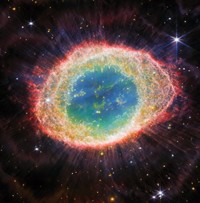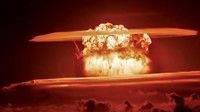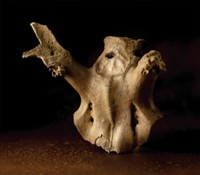Advertisement
Grab your lab coat. Let's get started
Welcome!
Welcome!
Create an account below to get 6 C&EN articles per month, receive newsletters and more - all free.
It seems this is your first time logging in online. Please enter the following information to continue.
As an ACS member you automatically get access to this site. All we need is few more details to create your reading experience.
Not you? Sign in with a different account.
Not you? Sign in with a different account.
ERROR 1
ERROR 1
ERROR 2
ERROR 2
ERROR 2
ERROR 2
ERROR 2
Password and Confirm password must match.
If you have an ACS member number, please enter it here so we can link this account to your membership. (optional)
ERROR 2
ACS values your privacy. By submitting your information, you are gaining access to C&EN and subscribing to our weekly newsletter. We use the information you provide to make your reading experience better, and we will never sell your data to third party members.
Analytical Chemistry
Newscripts
Ruminations On Reindeer And Radioactivity
by Manny I. Fox Morone
December 21, 2015
| A version of this story appeared in
Volume 93, Issue 49

Rumor has it that the flying-reindeer narrative surrounding Santa Claus was cemented into U.S. folklore in the early-20th century only when Lomen Co., a reindeer-meat-packing firm, launched a marketing strategy involving its reindeer pulling Santa’s sleigh in a Macy’s Christmas parade. Still, there’s no good explanation for why Claus’s reindeer fly, so the Newscripts gang looked into one possibility: Like countless science-fictional characters before them, could intense radiation help these ungulates get airborne?
A link exists. Lomen owed the abundance of their reindeer to herders belonging to the Sami people, an indigenous people of Scandinavia who introduced the first reindeer to North America. Coincidentally, the Sami people are also known to be some of the most radioactive humans on Earth—and their reindeer follow suit—because of nuclear weapons testing in the northern Soviet Union as well as fallout in the upper atmosphere from weapons tests around the world in the 1950s and ’60s. High radioisotope fixation in lichens was passed up the food chain through reindeer to herders.
“The reindeer herders of central Norway are more contaminated than most people around Chernobyl. You’ll struggle to find any person around Fukushima with more cesium-137 in their body than Norwegian reindeer herders,” Lavrans Skuterud, a senior research scientist with the Norwegian Radiation Protection Authority, tells Newscripts. Skuterud and his team have contributed to a decades-long effort to collect radiation data on the herders and the reindeer meat of Norway, and in Skuterud’s most recent study, they summarize studies on cancer rates and 137Cs concentrations in the Sami herders (Environ. Sci. Technol. 2015, DOI: 10.1021/es506244n).
Although reindeer don’t live long enough to have significant occurrences of cancer, herders show markedly lower cancer rates than the general Norwegian population despite high 137Cs concentrations. The study attributes the about 20% discrepancy to lifestyle factors such as “physical activity and a diet rich in antioxidants (from berries) and unsaturated fatty acids (from fish),” and Skuterud says it could also have to do with genetic differences between Sami individuals and other Scandinavians, data for which are not available.
The Norwegian team does not report any extraordinary behavior from the animals, so it appears nuclear reindeer do not fuel Santa’s sleigh.

The reindeer’s cousins, the radioactive roe deer and red deer in the Chernobyl area, haven’t been doing half-bad, a Belarusian wildlife census reports (Curr. Biol. 2015, DOI: 10.1016/j.cub.2015.08.017). Researchers counted snow tracks in Polessye State Radioecological Reserve, a nature reserve that covers about half of the Chernobyl exclusion zone, and found that deer and other large mammal populations have prospered in the three decades since the area’s nuclear disaster and are on par or exceeding populations in similar reserves.
Jim T. Smith, professor at the University of Portsmouth and principal investigator on the study, says this isn’t particularly surprising. It appears that the primary factor behind the wildlife flourishing or not has less to do with presence or absence of radiation and more with that of humans. “It’s a really interesting illustration of our misperception of what damage we do to the environment,” Smith tells Newscripts.
“The popular image of Chernobyl is radioactive wasteland,” he says. “But this makes us realize that our everyday activities—just being in a habitat and doing the things that people do—are worse,” he says.
Manny I. Fox Morone wrote this week’s column. Please send comments and suggestions to newscripts@acs.org.





Join the conversation
Contact the reporter
Submit a Letter to the Editor for publication
Engage with us on Twitter